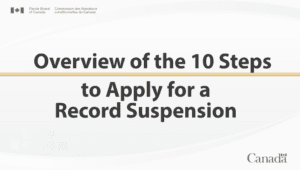 In Canada, the journey through the criminal justice system for those charged with a criminal offenCe begins with a critical step: the collection of fingerprints and photographs by law enforcement.
In Canada, the journey through the criminal justice system for those charged with a criminal offenCe begins with a critical step: the collection of fingerprints and photographs by law enforcement.
This procedure, mandated under the Identification of Criminals Act, plays a fundamental role in the legal process, serving as an essential prerequisite before an individual’s first court appearance.
Understanding the Legal Mandate
The requirement to provide fingerprints and photographs is rooted in the Identification of Criminals Act, a cornerstone of Canadian criminal procedure.
This Act empowers police to collect these biometric details from anyone charged with a criminal offence. The collection process is not a discretionary choice by law enforcement but a legal obligation.
The Collection Procedure
The process begins when an individual is formally charged with an offence.
The accused is brought to a police station or a designated processing center. Here, police personnel carry out the fingerprinting process, which typically involves the use of digital fingerprint scanners. This technology captures the fingerprints electronically, thus ensuring accuracy and quick processing.
Photographs, sometimes called as mugshots, are also taken during this session. These photographs usually include a front-facing image and a profile shot. The purpose of these photographs is to provide a current and clear visual identification of the individual.
Consequences of Failing to Comply
Failing to appear for scheduled fingerprinting and photograph sessions can lead to serious repercussions. The police may issue an arrest warrant, and the accused might face jail time for this failure, particularly in cases of serious charges like domestic assault or impaired driving.
Timing and Location
The timing of this procedure is typically set before the individual’s first appearance in court.
The location and schedule for fingerprinting and photographing are often outlined in legal documents provided to the accused, such as the Undertaking or Promise to Appear. Normally the accused must appear at the police station.
Where the accused is unable to meet the appointment they must contact the officer in charge of the police station and arrange a suitable appointment. Where the accused fails to appear for fingerprints and photographs a warrant will be issued for their arrest.
The Significance of This Step
It’s important to emphasize that fingerprinting does not imply guilt or equate to a criminal conviction. Rather, it is a standardized procedure applied to all individuals charged with an offence, regardless of the charge’s nature or severity.
This step is taken to ensure proper identification throughout the legal proceedings and to maintain accurate records.
Handling of the Collected Data
Once collected, fingerprints and photographs become part of a national database.
This information can be accessed by various law enforcement agencies across Canada for identification purposes in ongoing and future investigations. The data is handled in accordance with privacy laws and regulations, ensuring its use is limited to legitimate law enforcement and judicial purposes.
A Critical Distinction
It’s essential for the public to understand that the collection of fingerprints and photographs is a procedural measure in the criminal justice process.
While it may be an unsettling experience for the individual involved, it is not an indicator of guilt. The presumption of innocence remains a cornerstone of the Canadian legal system, and this procedure is in place to assist in the fair and accurate administration of justice.
In summary, the collection of fingerprints and photographs is a legally mandated, standard procedure in Canada’s criminal justice system
It serves as a crucial identification tool, helping to accurately link an individual to the charges they face. This process ensures that each case is handled with the correct identity in mind, providing a foundational element for the integrity of legal proceedings.
Application to Erase Fingerprints & Photographs
If you’ve been arrested but not convicted, you can request to erase your fingerprints, photographs, and disposition records held by the Police Service. Before submitting your application, a waiting period of five months from your last court date is required, ensuring all relevant documents are ready for review. Here are the prerequisites for your application to be considered:
- Age Requirement: You must be at least 18 years old at the time of the incident.
- Clean Criminal Record: You should have no criminal convictions.
- No Pending Charges: You must not have ongoing court cases.
- Offence Type: The offence must not be categorized as either a primary or secondary designated offence as per section 487.04 of the Criminal Code (see Toronto Police Services Board Minute P297/2007 for details)
- Peace Bond Status: Any Peace Bond must have expired.
- Disposition Categories: The charges against you must have been withdrawn, found not guilty, acquitted, dismissed, quashed, discharged, or stayed (including a one-year wait for Judicial or Crown Attorney Stay).
- Discharge Conditions: For an Absolute Discharge, a one-year waiting period must have passed; for a Conditional Discharge, a three-year period.
This process only pertains to the destruction of records held by the Police Service. It does not influence your travel eligibility to the United States, which is determined by U.S. authorities. For more information on travel waivers and cross-border travel, consult the Department of Homeland Security or the U.S. Consulate General in Toronto.
Reasons for Application Denial
Your application may be denied for several reasons:
- If the five-month waiting period post-disposition hasn’t elapsed.
- If you’re under 18 at the time of the incident.
- If you have a criminal conviction (in which case, consider applying for a record suspension).If you have ongoing court charges.
- If your record lists a primary or secondary designated offence.If your Peace Bond hasn’t expired.If your charge(s) stayed by Judicial or Crown Attorney haven’t passed the one-year wait.
- If your Absolute or Conditional Discharge wait period hasn’t expired.
- If your charges weren’t laid by the Police Service where you’re applying.If there are compelling public interest reasons against destruction.
- If the fingerprints and photographs are related to an extradition warrant.
Appeal Process for Denied Applications
If your application is denied, you’ll receive a letter stating the reasons. You have 30 days from receiving this letter to appeal. Appeals can be made for denials based on the nature of the offence or compelling public interest reasons. Your appeal should include a detailed letter and supplementary documents like court information, transcripts, correspondence with the Crown Attorney, letters of support, and character references.
Factors Considered in Appeals
The Police Service will consider various factors during the appeal, such as:
- Court transcripts to understand the reasons for withdrawal of charges.
- The context of accepting a peace bond, especially if it differs from the original police report.
- The hardship you face due to the retention of your fingerprints and photographs.
- Evidence of your positive contributions to society and community involvement.







